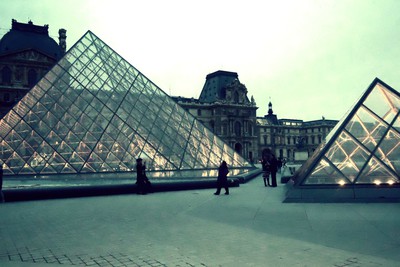There's a ghost in my lungs and it sighs in my sleep




Dolce far niente, i think thats how you spell it. Italian for the sweetness of doing nothing! everyone should know about this, not just us eat.pray.love lovers! It's laying on the couch after work instead of cooking or cleaning or planing, it's watching the TV the whole weekend, it's lingering in bed, it's eating whatever you LOVE, it's sex, it's laying in the sun, it's the sweetness of doing nothing important. It's no diet, no waking up from the alarm, no to much TV, it's taking care of yourself in a way that is so much more important than the things we do cos we think its so very important..
I'd go hungry i'd go black and blue to make you feel my love




Lent (Latin: Quadragesima, "fortieth") is the Christian observance of the liturgical year from Ash Wednesday to Easter Sunday.
The traditional purpose of Lent is the penitential preparation of the believer—through prayer, penance, repentance, almsgiving, and self-denial. Its institutional purpose is heightened in the annual commemoration of Holy Week, marking the Death and Resurrection of Jesus, which recalls the events of the Passion of Christ on Good Friday, which then culminates in the celebration on Easter Sunday of the Resurrection of Jesus Christ.
During Lent, many of the faithful commit to fasting or giving up certain types of luxury as a form of penitence. The Stations of the Cross, a devotional commemoration of Christ's carrying the Cross and of His execution, are often observed. Many Roman Catholic and some Protestant churches bare their altars of candles, flowers, and other devotional offerings, while Crucifixes, religious statues, and other elaborate religious paraphernalia are often veiled in violet fabrics in observance of this event. In certain pious Catholic countries, grand processions and cultural customs are observed, and the faithful attempt to visit seven churches during Holy Week in honor of Jesus Christ heading to Mount Calvary.
I think this is a beutiful tradition. I told my friend i made a promise to myself to blog once a day and she asked me if it was for lent. I'd never heard about it or celibrated lent, but im taking this on me now, to sacrifice something or make a speacial promise. So today I'll make my promise, to blog every day and I'll write some porstcards to my loved ones. That'll be my rent promise, perhaps not very compassionate but as my first lent promise it will have to due.
I’ll look for you in old Honolulu, San Francisco, Ashtabula. You gonna have to leave me now, I know, But I’ll see you in the sky above, In the tall grass, in the ones I love. You gonna make me lonesome when you go




Whats hard in life is to love one self, believe in whats true, spit greed in the face, open up your feelings and show them without shame, spending time on yourself, compassion, understanding, follow your inner voice whatever you call it, asking for help when you need it the most, be yourself, still it's what we need to aim for. As it is said, the answers are blowin in the wind. Change is beautiful, change with the wind. Let it take you places and see where you end up. Control is scary, cos we fear to be without it. Now is the time, yesterday was too and tomorrow will be as well.
In which every mouth was a shout, every face a grimace, every figure a posture




The heart (♥) has long been used as a symbol to refer to the spiritual, emotional, moral, and in the past, also intellectual core of a human being. As the heart was once widely believed to be the seat of the human mind, the word heart continues to be used poetically to refer to the soul, and stylized depictions of hearts are used as prevalent symbols representing love.
In religious texts the heart was historically ascribed much mystical significance, eighter as methafor or as an organ genuinely believed to have spiritual or divine attributes.
In Egyptian mythology, the heart portion of the soul was weighed in a balance against the feather of Ma'at, symbolising truth, in the judgment of the dead in the Egyptian Book of the Dead. Egyptian sources do not actually reveal whether the heart had to be lighter than the feather for the deceased to pass into paradise—all depictions show only the weighing of the heart, not the actual results, heavier or lighter.
Similarly, in the Bible, this idea emerges in the earliest passages; Genesis 6:5 situates the thoughts of evil men in their hearts, and Exodus 5 through 12 speak repeatedly of the Lord "hardening Pharaoh's heart." By this it is meant that God made Pharaoh resolve not to let the Israelite slaves leave Egypt, in order to bring judgment against Pharaoh and demonstrate his power: "'Go to Pharaoh, for I have hardened his heart and the hearts of his officials so that I may perform these miraculous signs of mine among them'" (Exodus 10:1). In the Book of Jeremiah 17:9, it is written that the Lord is the judge who "tries" the human heart.
The Sacred Heart of Jesus and the Immaculate Heart of Mary are traditional Roman Catholic devotional images.
Many classical philosophers and scientists, including Aristotle, considered the heart the seat of thought, reason or emotion, often rejecting the value of the brain.
The Stoics taught that the heart was the seat of the soul.
The Roman physician Galen located the seat of the passions in the liver, the seat of reason in the brain, and considered the heart to be the seat of the emotions. While Galen's identification of the heart with emotion were proposed as a part of his theory of the circulatory system, the heart has continued to be used as a symbolic source of human emotions even after the rejection of such beliefs.
